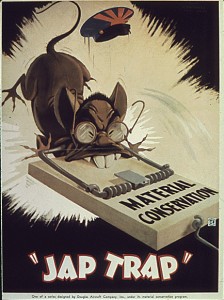Mussolini could talk the talk, but could he walk the walk? Simply put, no, he couldn’t. Mussolini’s Fascist diplomacy regarding his foreign and military policies exposed his true character and his illusions towards Italy’s true power and the relationship he maintained with Hitler. Pride remained Mussolini’s Achilles heel. Repeatedly, he ignored the word of his economic and political advisers to save the face of Fascism in the prewar period. Obsessed with prestige, Mussolini invaded and colonized Ethiopia to glorify Italy in the international community and perhaps gain the respect from Hitler and other European powers he thought Italy deserved. After Italy’s humiliating defeat in 1896 during their military conquest of Ethiopia, Mussolini visualized redemption. At huge economic losses, Italy occupied Ethiopia against British and French desire and damaged her relationship with the future allied powers. After defying the British and French, Mussolini decided to gain political favor from Hitler. Mussolini thought if he created an alliance with Hitler, the British and French would become frightened of Italy. This proved to be a mistake, however.
Mussolini “overestimated Italy’s bargaining position; and underestimated Hitler.” (Clark, 280) 1936 marked the signing of the Rome-Berlin Axis and Italian involvement in Spain during the Spanish Civil War alongside Hitler. This failed in two ways: to genuinely increases the strength in alliance between Hitler and Mussolini, while simultaneously destroying any chance of reconciliation with the French and British. The reason it became apparent that this military act did not protect Italy from Nazi invasion was illuminated when Hitler annexed Austria in 1938, which was an obvious territorial threat. Mussolini pressed forward on the same path despite these warning signs, eventually playing himself into Hitler’s hands. In what Clark describes as a “foolish move,” Mussolini sealed his alliance with Nazi Germany with his Pact of Steel in 1939. (Clark, 283) This eventually served to draw Italy into a war that remained highly unpopular with Italian citizens.
Had Mussolini been more patient and less prideful, could Italy have avoided involvement in World War II?



